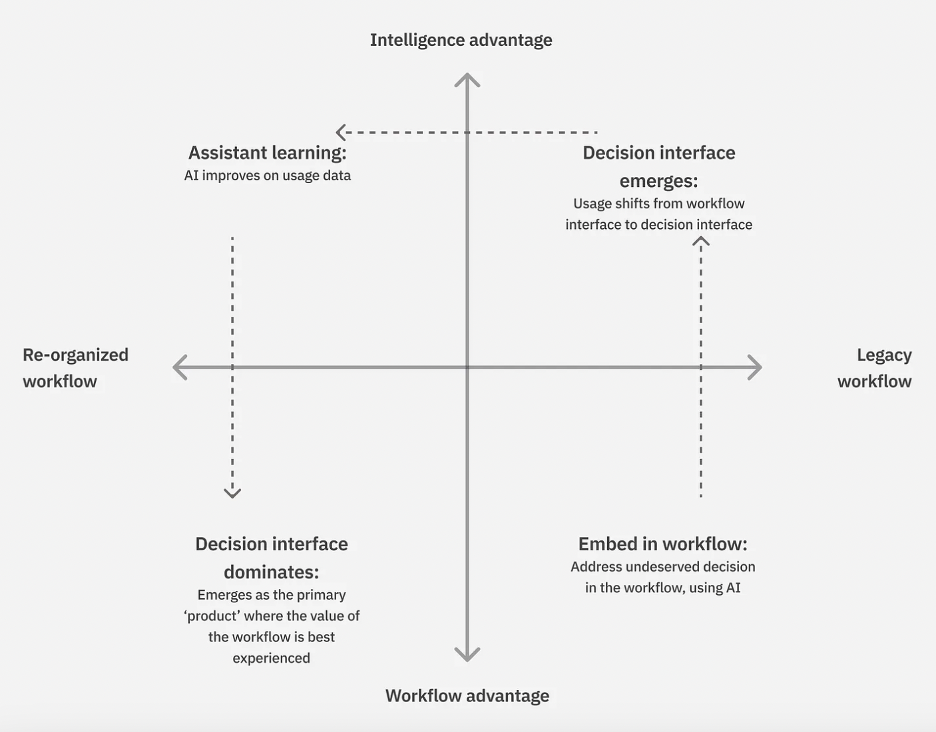California Management Review
California Management Review is a premier professional management journal for practitioners published at UC Berkeley Haas School of Business.
Sangeet Paul Choudary

Image Credit | Paul
A recent report from the IBM Institute of Business Value states that 75% of CEOs believe that competitive advantage “will depend on who has the most advanced generative AI.”
Julian Birkinshaw, “How Incumbent Firms Respond to Emerging Technologies: Comparing Supply-Side and Demand-Side Effects,” California Management Review, Volume 66, Issue 1.
This belief, even if prevalent among the respondent CEOs, is misguided.
AI, much like other technologies, is rapidly turning into a commodity, especially with rapidly improving open-source model and tool alternatives. If every CEO can access “the most advanced generative AI,” it ceases to be a source of competitive advantage.
Advantage won’t stem from AI itself, but from how well it is used to navigate and shape the competitive ecosystem. Leaders need to evaluate how AI can pull key advantages towards their business and erode those held by rivals.
An ecosystem consists of complementary activities coordinated across multiple players to serve the end customer. Its boundaries are defined by the customer’s journey, not traditional industry lines, allowing players from unrelated industries to enter as long as they solve the customer’s needs.
In a competitive ecosystem, players seek dominance by building advantages at key points in the customer journey. These advantages typically fall into three categories. First, a relationship advantage is built on the basis of preferential customer access or relationship. For instance, resellers enjoy a relationship advantage, which helps them capture margins from product manufacturers. Second, a workflow advantage is built through the right to power the core workflow of the customer - through superior customer experience or ownership of unique capabilities critical to delivering the workflow. WeChat first engaged users with social networking and now serves as a workflow layer within which users can access other services, for instance, food delivery. Third, an intelligence advantage is built through the right to inform the most important decision for the customer. TripAdvisor’s star-based hotel ratings create an intelligence advantage, such that customers often start their search on TripAdvisor before being redirected to a booking site.
Your AI strategy should focus on enhancing your current advantages or weaken competitors’ strengths within the ecosystem. AI can either shift competitive advantages in your favor or reinforce your existing ones.
First, a company may use AI to strengthen its position in the ecosystem by bolstering an intelligence advantage that it already enjoys.
CCC Intelligent Solutions - the leading provider of auto insurance case management software - coordinates activities across insurers, repairers, OEMs, and claimants, among others.
CCC orchestrates the auto repair ecosystem by creating a ‘digital twin’ of each insurance case, documenting facts and progress. Its competitive edge comes from this digital twin’s ability to drive decision-making across the ecosystem, giving it an intelligence advantage. CCC enhances this advantage with AI, including tools like CCC Estimate for quick repair estimates, computer vision for damage analysis, and Generative AI to extract structured data from unstructured sources.
Another way to gain advantage in a competitive ecosystem is through dismantling entrenched relationship advantages.
In a typical manufacturer - reseller relationship, resellers combine specialized product knowledge with their insight into local customer needs to act as intermediaries. To gain greater control over the customer interaction, a manufacturer may develop a ‘sales assistant’ AI, trained on its product knowledge, to augment resellers. This ‘sales assistant’ expands the reseller base by reducing the learning curve for new resellers. As more resellers utilize the ‘sales assistant’, it accumulates valuable customer data, further training the AI. Eventually, the AI can diminish the pricing power of resellers or replace them entirely by evolving into a customer-facing assistant. In either case, the relationship advantage of the reseller is weakened and the intelligence advantage built by the manufacturer helps develop a direct relationship with the end customer.

Contact center software providers like Intercom have already started building contact center agents trained on product knowledge and charge for query resolution rather than for software usage.
A third way to develop competitive advantage using generative AI is through building intelligence advantage to dismantle a player’s workflow advantage. Players who develop deep workflow lock-in may be displaced if AI can empower customers with critical decisions, not adequately served in the current workflow.
In the corporate travel industry, the travel booking decision is often managed within a larger workflow spanning compliance, approval, and payments. A corporate booking agency may prioritize compliance and approvals over booking optimal trips, and may continue to enjoy the advantages of workflow lock-in on that basis.
This workflow advantage may be dismantled by building an intelligence advantage. A travel booking AI assistant, integrated into the planning and booking workflow, can help move user engagement away from corporate travel software to the conversational assistant. While traditional booking software was primarily used by central travel teams, the AI assistant may even be used directly by employees in planning trips. As the assistant learns employee preferences from trips being booked, its trip planning improves. Using this intelligence advantage, the AI assistant increasingly takes over the workflow.

Both Expedia and Booking have launched AI travel assistants to capitalize on this and strengthen their workflow advantage, as also to ensure that upstarts with an intelligence advantage don’t dismantle their workflow advantage.
As the usage of the AI assistant builds intelligence advantage on travelers, the compliance workflow ceases to be the dominant workflow. Instead, it plugs into the AI assistant. Eventually, the AI interface emerges as the primary interface with both an intelligence advantage and a workflow advantage.
As with previous technologies, AI is fast becoming a commodity. Competitive advantage lies not in the technology but in how it is leveraged to reshape competitive dynamics within an ecosystem. Companies that strategically use AI within their competitive ecosystem can reinforce their competitive position and even reshape the playing field to their benefit.
 Insight
Olaf J. Groth et al.
Insight
Olaf J. Groth et al.
 Insight
Egi Nazeraj
Insight
Egi Nazeraj